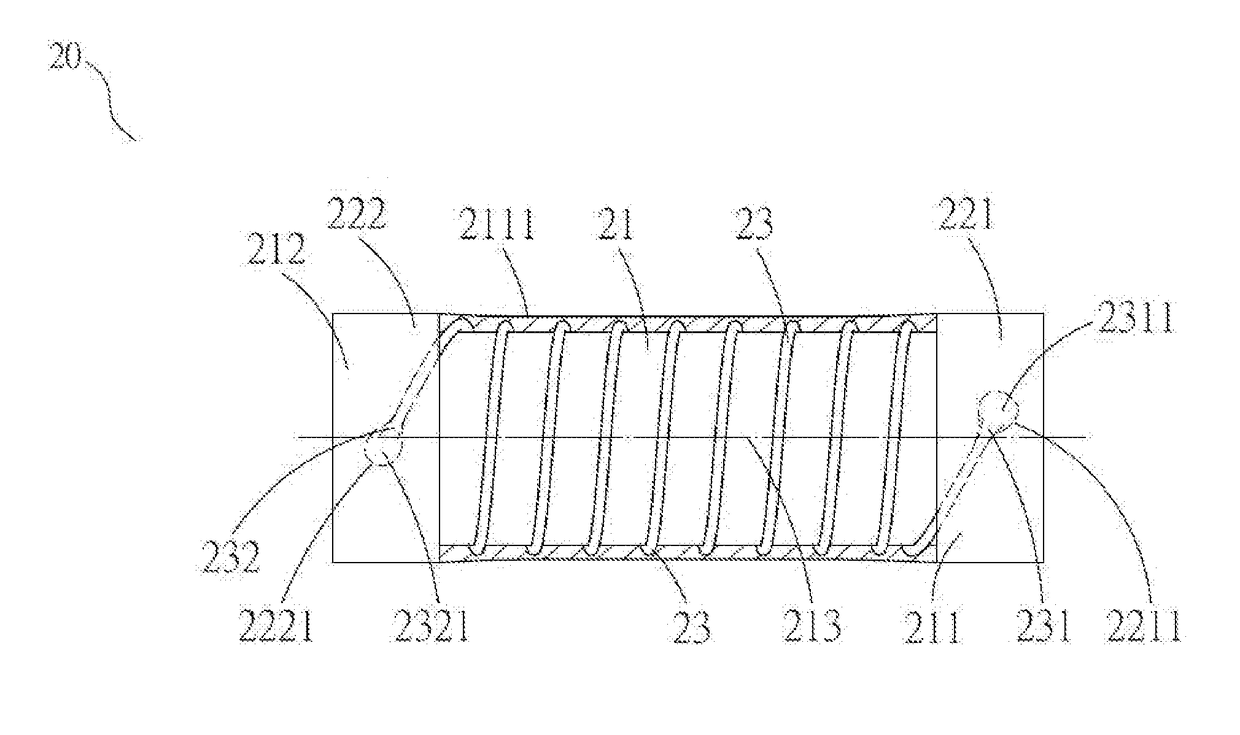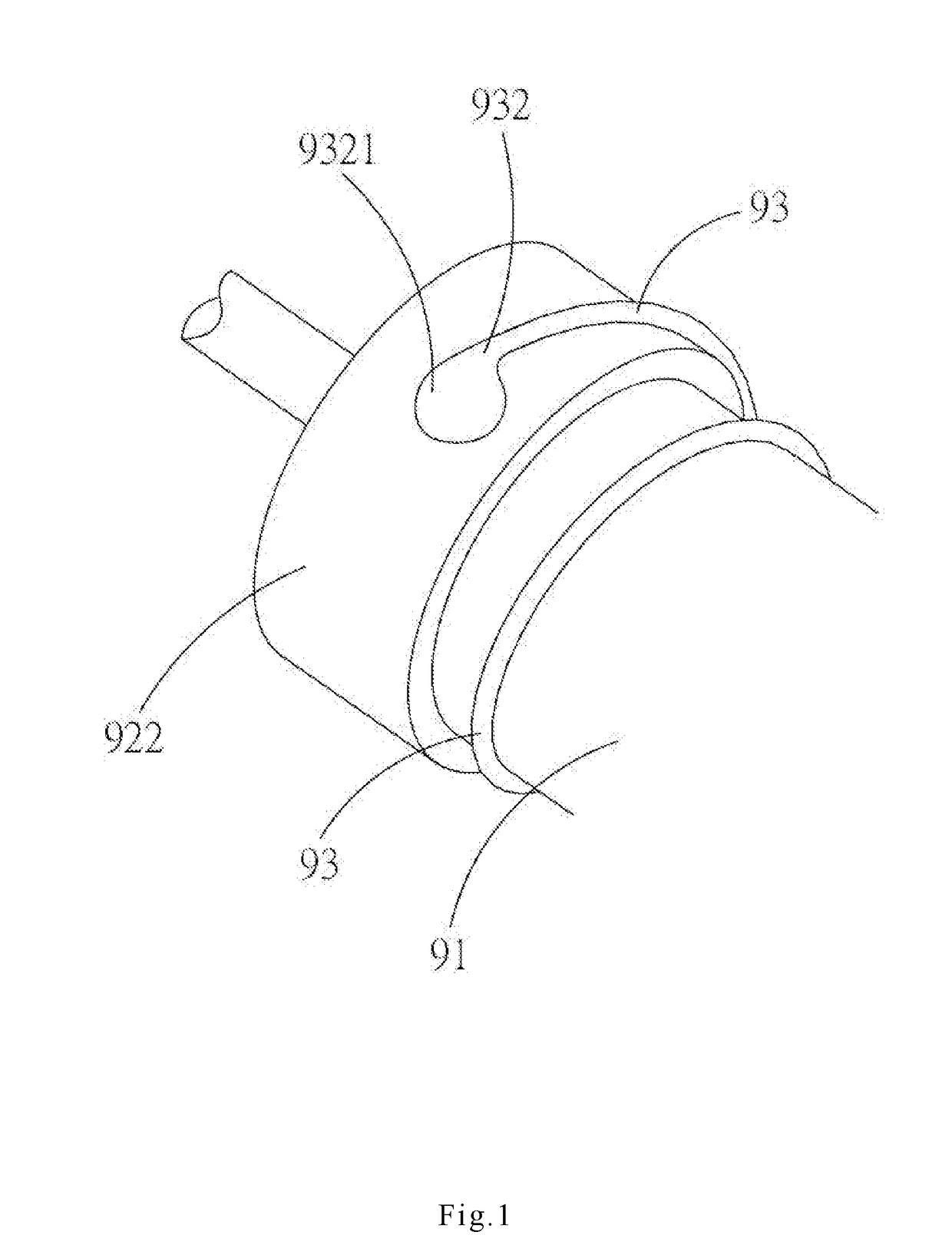Wire-wound fuse resistor and method for manufacturing same
a wire-wound resistor and fuse technology, which is applied in the manufacture of fuse devices, resistive element windings, electrical devices, etc., can solve the problems of surge resistance, soldering points, and certain failure rates of wire-wound resistors
- Summary
- Abstract
- Description
- Claims
- Application Information
AI Technical Summary
Benefits of technology
Problems solved by technology
Method used
Image
Examples
Embodiment Construction
[0068]As shown in FIG. 3A, FIG. 3B, FIG. 4A and FIG. 4B, according to the first example of the present invention (the MELF type of wire-wound resistor), the present invention provided a surge-resistant wire-wound resistor 20, comprising:[0069]a ceramic rod 21 which had a first end 211 and a second end 212;[0070]one or more than one wound metal wire 23 which had a wire head 231 and a wire tail 232 and was helically wound around the ceramic rod from the first end 211 to the second end 212;[0071]a first cap 221 and a second cap 222 which were respectively disposed along an axis of the ceramic rod 21 and extending outwardly from the first end 211 and the second end 212, wherein the wire head 231 and the wire tail 232 were respectively soldered on the surfaces of the first cap 221 and the second cap 222 at the first cap 221 and the second cap 222, and the first cap 221 and the second cap 222 were respectively electroplated with a first cap electroplated layer 2211 on the surface of the f...
PUM
 Login to View More
Login to View More Abstract
Description
Claims
Application Information
 Login to View More
Login to View More - R&D
- Intellectual Property
- Life Sciences
- Materials
- Tech Scout
- Unparalleled Data Quality
- Higher Quality Content
- 60% Fewer Hallucinations
Browse by: Latest US Patents, China's latest patents, Technical Efficacy Thesaurus, Application Domain, Technology Topic, Popular Technical Reports.
© 2025 PatSnap. All rights reserved.Legal|Privacy policy|Modern Slavery Act Transparency Statement|Sitemap|About US| Contact US: help@patsnap.com



